Black Mamba Snake:
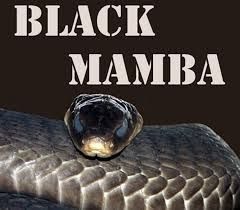
The black mamba is a venomous snake endemic to sub-Saharan Africa. It takes its common name not from the colour of its scales, but from the interior of its mouth, which is inky-black. It is the longest species of venomous snake on the African continent, with a length typically ranging from 2 meters (6.6 ft) to 3 meters (9.8 ft) and up to 4.3 to 4.5 meters (14.1 to 14.8 ft). It is among the fastest moving snakes in the world, capable of moving at 11 km/h (6.8 mph) over short distances.
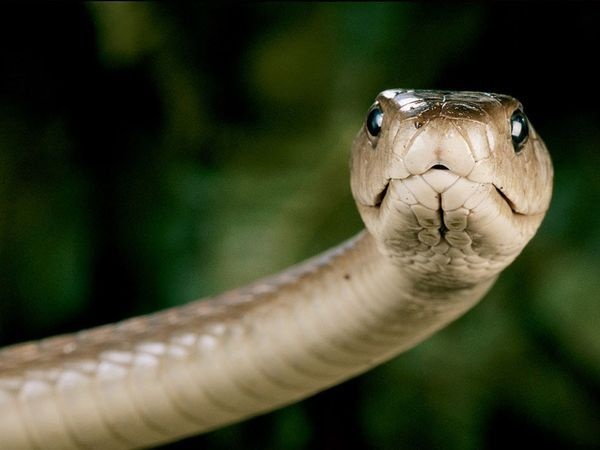
Black Mamba Mating Period:
Black mambas breed annually and mating occurs in the early spring. Females lay eggs which gestate over 80 to 90 days before hatching. Juvenile black mambas are lighter in colour than adults and darken with age. Although mambas are typically tree-dwelling snakes, the black mamba is only occasionally arboreal, preferring to build lairs in terrestrial habitats. The black mamba is found across a range of terrain from savannah, woodlands, rocky slopes and dense forests. It is diurnal and chiefly an ambush predator, known to prey on hyrax,bushbabies and other small mammals. Adult black mambas have few predators in the wild.
The venom of the black mamba is highly toxic, potentially causing collapse in humans within 45 minutes or less. Without effectiveantivenom therapy, death typically occurs in 7–15 hours. The black mamba is capable of striking at considerable range and occasionally may deliver a series of bites in rapid succession. Despite its reputation for being highly aggressive, like most snakes, it usually attempts to flee from humans unless threatened or cornered.
Area Of Living:
The black mamba occurs across a wide and occasionally fragmented range of Sub-Saharan Africa. Specifically, the black mamba's range has been observed as: north east Democratic Republic of the Congo, south western Sudan to Ethiopia, Eritrea, Somalia, Kenya, eastern Uganda, Tanzania, Burundi, Rwanda, southwards to Mozambique,Swaziland, Malawi, Zambia, Zimbabwe and Botswana to KwaZulu-Natal in South Africa, and Namibia; then north easterly through Angola to south eastern Democratic Republic of the Congo. The black mamba's distribution contains gaps within the Central African Republic, Chad, Nigeria and Mali. These gaps may lead physicians to misidentify the black mamba and administer an ineffective antivenom.
The black mamba was also recorded in 1954 in West Africa, in the Dakar region of Senegal. However, this observation, and a subsequent observation that identified a second specimen in the region in 1956, has not been confirmed and thus the snake's distribution in this area is inconclusive. The black mamba is not commonly found at altitudes above 1,000 metres (3,300 ft), although the distribution of black mamba does reach 1,800 metres (5,900 ft) in Kenya and 1,650 metres (5,410 ft) in Zambia.
The black mamba is primarily terrestrial in nature, although it has been observed to be occasionally arboreal typically inhabiting neglected areas of scrub, termite mounds, abandoned burrows and rock crevices. It has adapted to a variety of terrain ranging from savannah and woodlands to rocky slopes and dense forests. The black mamba prefers more arid environments such as light woodland and scrub, rocky outcrops, and semi-arid dry savannah.
Speed:
The black mamba is the fastest moving snake found in Africa, and one of the fastest moving snakes in the world—perhaps the fastest. There have been many exaggerated stories concerning the black mamba's speed of movement across the ground,and the elongated slender body can create the impression that it is moving faster than it really is these stories include the myth that it can outrun a galloping horse or a running human. On 23 April 1906, on the Serengeti Plains, an intentionally provoked and angry black mamba was recorded at a speed of 11 km/h (6.8 mph), over a distance of 43 meters (141 ft). A black mamba would almost certainly not be able to exceed 16 km/h (9.9 mph)and it can only maintain such relatively high speeds for short distances.
Diet:
The black mamba is diurnal and chiefly an ambush predator. Hunting is usually conducted from a permanent lair, which it will regularly return to providing it is not disturbed. While hunting, it has been known to raise a large portion of its body off the ground. The black mamba does not typically hold onto prey after biting, instead releasing its quarry and waiting for it to succumb to paralysis and die. If prey attempts to escape or defend itself, the black mamba will often follow up its initial bite with a rapid series of strikes to incapacitate and quickly kill its prey. The snake has been known to prey on hyrax and rock hyrax, bush babies, and bats. The black mamba has a potent digestive system and has been observed to fully digest prey within eight to ten hours.
Predators Of Black Mamba:
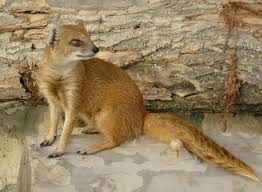
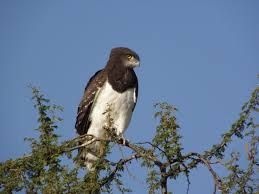
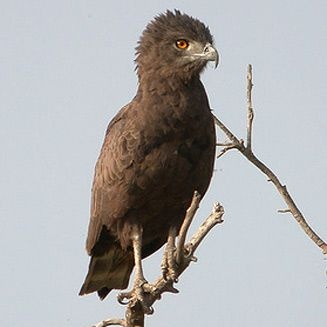
Lifespan:
There is little information available concerning the lifespan of wild black mambas, but the longest surviving captive example had a recorded lifespan of 11 years. It is possible that wild snakes may live significantly longer than this.
Attacks on humans:
The black mamba is popularly regarded as the most dangerous and feared snake in to South African locals the black mamba's bite is known as the "kiss of death.However, attacks on humans by black mambas are rare, as they usually try to avoid confrontation and their occurrence in highly populated areas is not very common compared with some other species.Additionally, the ocellated carpet viper is responsible for more human fatalities due to snakebite than all other African species combined. A survey of snakebites in South Africa from 1957 to 1963 recorded over 900 venomous snakebites, but only seven of these were confirmed black mamba bites, at a time when effective antivenom was not widely available. Out of more than 900 bites, only 21 ended in fatalities, including all seven black mamba bites.
Reported bite cases:
In 1998, Danie Pienaar, now head of South African National Parks Scientific Services, survived the bite of a black mamba without antivenom. Although no antivenom was administered, Pienaar was in serious condition, despite the fact the hospital physicians declared it a "moderate" black mamba envenomation. At one point, Pienaar lapsed into a coma and his prognosis was declared "poor". Upon arrival at hospital Pienaar was immediately intubated, given supportive drug therapy, put on mechanical ventilation and was placed on life support for three days; until the toxins were flushed out of his system. He was released from hospital on the fifth day. Pienaar believes he survived for a number of reasons. In an article in Kruger Park Times he said: "Firstly, it was not my time to go." the article also stated "The fact that he stayed calmed and moved slowly definitely helped. The tourniquet was also essential."
In another case, 28-year-old British student Nathan Layton was bitten by a black mamba and died of a heart attack in less than an hour in March 2008. The black mamba had been found near a classroom at the Southern African Wildlife College in Hoedspruit, where Layton was training to be a safari guide. Layton was bitten by the snake on his index finger while it was being put into a jar, but he didn't realize he'd been bitten. He thought the snake had only brushed his hand. Approximately 30 minutes after being bitten Layton complained of blurred vision. He collapsed and died of a heart attack, nearly an hour after being bitten. Attempts to revive him failed and he was pronounced dead at the scene.
In 2013, in a rare and unusual case, American professional photographer, Mark Laita, was bitten on the leg by a black mamba during a photo-shoot of a black mamba at a facility in Central America. The bite ruptured an artery in his calf, and he was gushing blood profusely. Laita did not go to the doctor or the hospital, and except for the swollen fang marks giving him intense pain during the night, he was not affected and was fine physically. This led him to believe that the snake either gave him a "dry bite" (meaning without injecting venom) or that the heavy bleeding pushed the venom out. Some commenters to the story suggested that it was a venomoid snake (in which the venom glands are surgically removed). Laita responded that it was not the case. Only later, Laita found that he had captured the snake biting his leg in a photograph.



